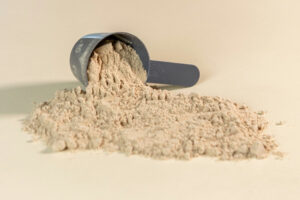Candles have been a beloved decorative and functional item for centuries. Whether you want to add ambiance to your home or give a personalized gift, candles are a great option. While you can buy candles at the store, there’s something special about creating your own. Making candles at home is a fun and rewarding project for all skill levels. In this article, we’ll explore the benefits of making your own candles, the materials needed, basic steps for making candles, tips for success, advanced techniques, and troubleshooting common issues.
Why Make Your Own Candles?
There are several benefits to making your own candles at home. Here are a few reasons why it’s worth trying:
- Saving money: Candles can be expensive, especially if you’re buying high-quality, scented candles. By making your own, you can save money and make as many candles as you want.
- Controlling ingredients and scents: When you make candles at home, you have complete control over the ingredients and scents. You can choose the type of wax, fragrance oils, and colors that you want to use.
- Personalizing candles as gifts: Homemade candles make great gifts. You can personalize them with specific scents and colors that the recipient will love.
- Developing a new skill: Candle making is a fun and rewarding hobby that can be enjoyed by all skill levels. It’s a great way to learn a new skill and express your creativity.
Materials Needed
To make candles at home, you’ll need a few essential materials. Here’s a comprehensive list of what you’ll need:
- Wax: The type of wax you use will depend on your desired outcome. Soy wax is a popular choice for beginners, while beeswax and paraffin wax are also commonly used.
- Wicks: Wicks come in a variety of sizes and materials. It’s important to choose the right size and type of wick for your candle. Cotton wicks are a good option for most types of wax.
- Fragrance oils: Fragrance oils are used to add scent to your candles. Choose high-quality oils that are safe for candle making.
- Containers: You’ll need containers to pour your wax into. Glass jars and tins are popular choices.
- Thermometer: A thermometer is essential for making candles. You need to monitor the temperature of the wax to ensure that it’s at the right temperature before pouring.
- Double boiler: A double boiler is used to melt the wax. You can create a makeshift double boiler by placing a metal bowl over a pot of simmering water.
- Other optional tools: You may also want to invest in tools like a pouring pitcher, a wick centering tool, and a heat gun.
Basic Steps for Making Candles
Making candles at home is a simple process. Here are the basic steps:
- Prepare the wax and containers: Melt the wax in a double boiler and prepare your containers by cleaning them and placing the wicks in the center.
- Add fragrance and coloring (if desired): Once the wax is melted, you can add fragrance oils and color. Be sure to follow the manufacturer’s instructions and measure the oils and coloring accurately.
- Insert wicks: Carefully insert the wicks into the center of the containers. Use a wick-centering tool to ensure that the wick stays in place.
- Allow the wax to cool and harden: Once the wax is poured into the containers, let it cool and harden completely. This can take several hours, depending on the size of your candles.
Tips for Success
While making candles at home is a fun and rewarding project, there are some tips that can help you achieve the best results. Here are a few tips for success:
- Choose the right type of wax for your desired outcome: Different types of wax have different properties and will affect the final product differently. Soy wax is a good option for beginners, while beeswax and paraffin wax have their own unique qualities.
- Measure ingredients accurately: It’s important to measure the wax, fragrance oils, and coloring accurately to ensure that your candles turn out the way you want them to. Use a kitchen scale to measure your ingredients and follow the manufacturer’s instructions.
- Pay attention to temperature: Temperature is critical when making candles. Be sure to monitor the temperature of the wax and follow the manufacturer’s instructions for the ideal pouring temperature. If the wax is too hot or too cold, it can affect the appearance and performance of your candles.
- Test fragrances before committing to a large batch: Before making a large batch of candles with a new fragrance, it’s a good idea to test it out in a smaller batch. This will help you determine if you like the scent and if it performs well in your wax.
Advanced Techniques
Once you’ve mastered the basics of candle making, you may want to try some advanced techniques. Here are a few ideas to get you started:
- Using multiple colors and layers: To create multi-colored candles, pour layers of different colored wax into the container, allowing each layer to cool and harden before pouring the next one.
- Creating texture and patterns with additives like herbs or glitter: You can add texture and visual interest to your candles by adding herbs or glitter to the wax before pouring.
- Experimenting with different wick types: There are many types of wicks available, including cotton, hemp, and wooden wicks. Try experimenting with different types of wicks to achieve different effects.
- Incorporating unusual containers like seashells or teacups: Get creative with your candle containers. You can use anything from mason jars to seashells to create unique and personalized candles.
Troubleshooting Common Issues
Even with the best intentions, issues can arise when making candles. Here are some common issues and solutions:
- Cracking or uneven surfaces: If your candle has a cracked or uneven surface, it may be due to rapid cooling. To prevent this, try cooling the candle more slowly by placing it in a warm (not hot) oven or covering it with a towel.
- Sinking wicks: If your wicks are sinking into the wax, it may be due to air pockets in the wax. To prevent this, tap the container on a hard surface to release any air bubbles before the wax sets.
- Poor scent throw: If your candle isn’t emitting a strong scent, it may be due to the type or amount of fragrance oil used. Try using a different type of fragrance oil or increasing the amount used.
- Wet spots: Wet spots are areas on the candle where the wax has pulled away from the container, leaving an unattractive appearance. To prevent wet spots, try preheating your container before pouring the wax and pouring at a lower temperature.
Final Thoughts
Candle making is a fun and rewarding hobby that can be enjoyed by all skill levels. Whether you want to save money, personalize gifts, or express your creativity, making candles at home is a great option. By following the tips and techniques in this article, you can create beautiful and unique candles that will add warmth and ambiance to your home or make thoughtful gifts for loved ones.









Reader Interactions